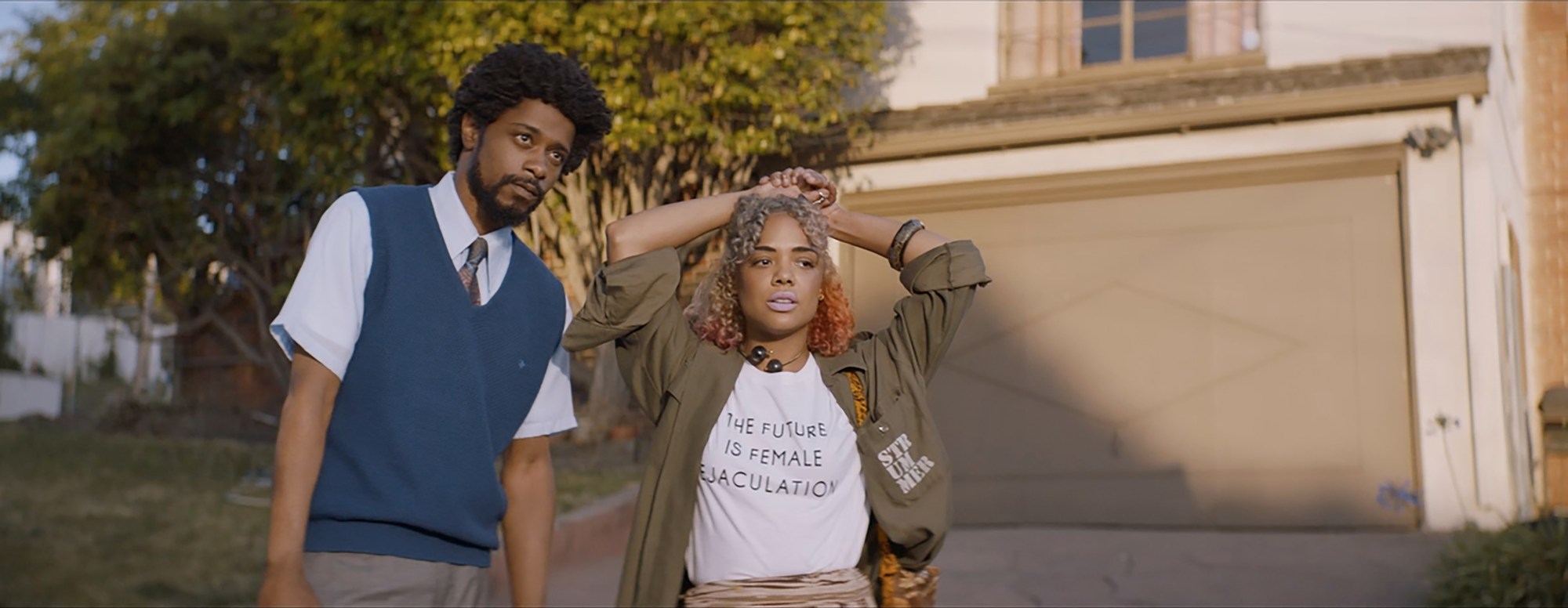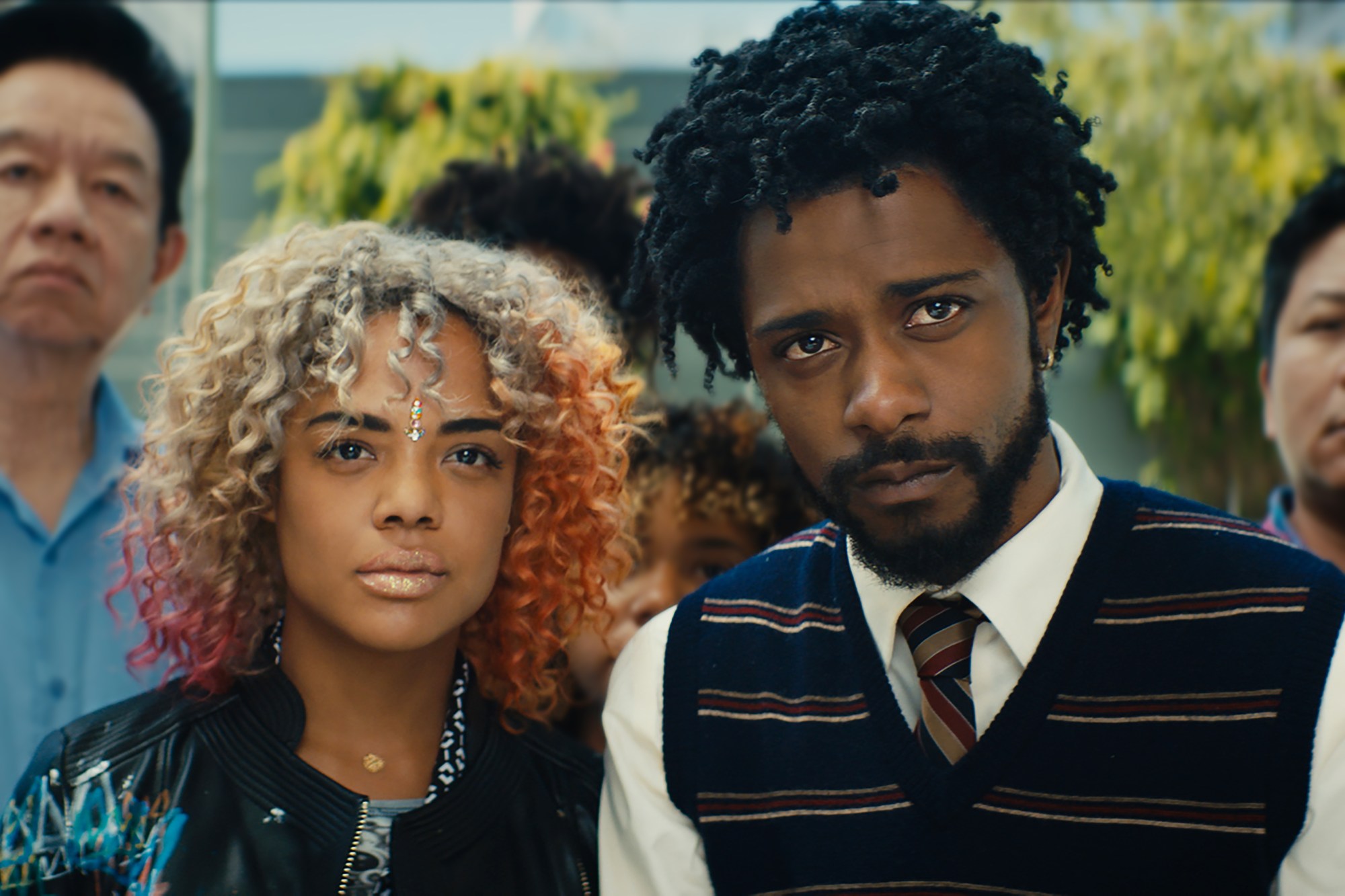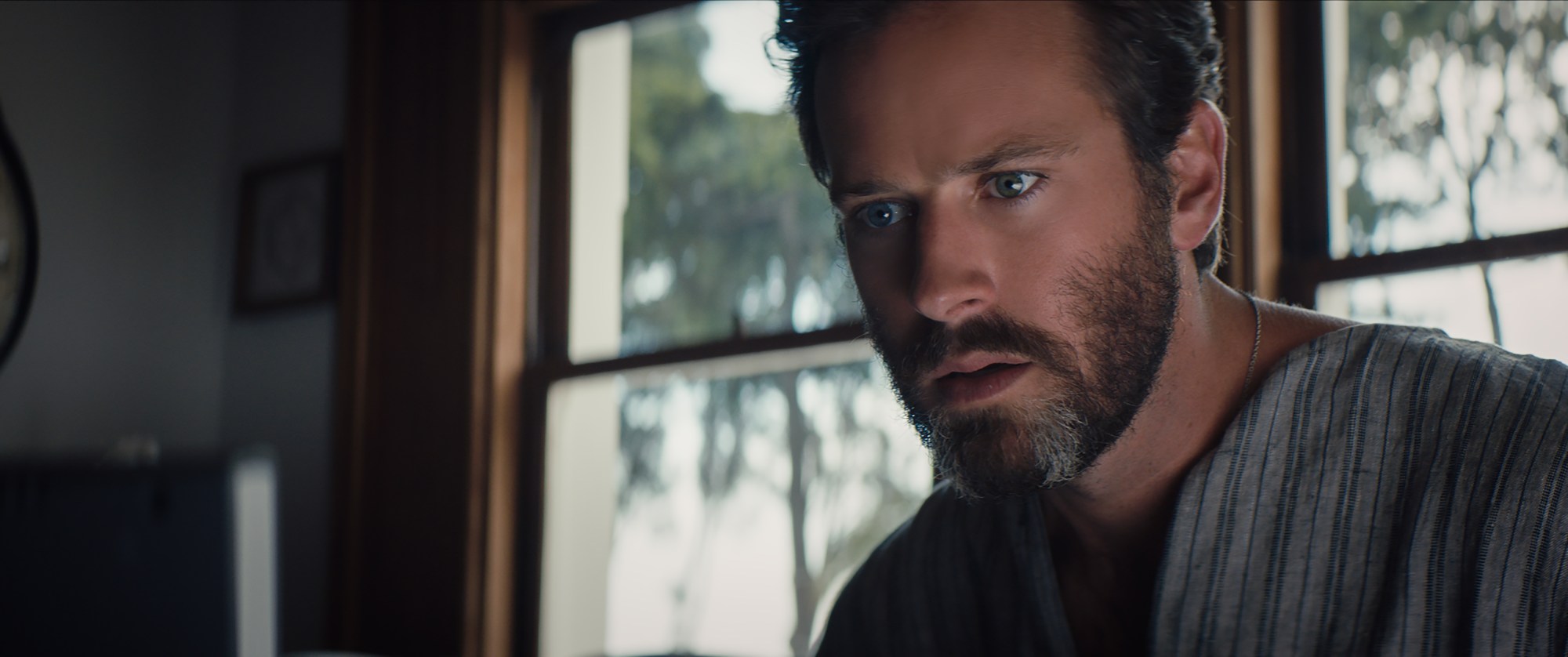Boots Riley’s outrageous debut feature is everything you might expect from the rapper who’s spent years skewering political and social issues as frontman of The Coup, a “goddamn band from muthafuckin Oakland, CA,” according to the collective’s Twitter account. Sorry to Bother You is set in an Oakland future not far from now, where black characters speak in “white voice” to telemarket slave labor for a nefarious CEO (Armie Hammer) who dresses like Julian Assange on Ayahuasca.
Costume designer Deirdra Elizabeth Govan was attending Pratt and Parsons in early 90s Brooklyn, when she first heard Boots spit revolutionary lyrics about capitalism and class disparities. Her richly layered costumes for Sorry to Bother You were more heavily inspired by those college years than by anything in the sci-fi dystopian film canon. Lakeith Stanfield and Tessa Thompson, who play upstart telemarketer Cassius Green and his freewheeling artist girlfriend Detroit respectively, are as punk as they are hip-hop. Detroit rocks all manner of flamboyant paint-streaked coats, equally colorful curly hair, and the oversized earrings featuring ominous slogans: MURDER MURDER MURDER / KILL KILL KILL. Cassius looks like a momma’s boy whose mom has an affinity for argyle sweater vests and ties swiped from her brother’s wardrobe — eventually complemented by a white bandana soaked with his own blood.
Govan came to Sorry to Bother You after working with producer Nina Yang Bongiovi on Netflix’s Roxanne Roxanne, about teen battle rap champ Roxanne Shanté. “She presented the script to me and I absolutely fell in love,” Govan tells i-D. “I loved the aspect of black and brown people doing something with magical realism, and taking it to a whole new level.” We talked to the designer about bringing Boots’s unsettling, surrealist world to life.
Why was the magical realism element so immediately appealing to you as a costume designer?
The characters are people that I went to art design school with [at Parsons and Pratt]. People experimented with their own individual style, they played with clothing, they played with looks. The thing I really appreciated about designing this movie was that I had the ability to come up with ideas, and they really weren’t off the wall. They were in tune with the characters. It looks like [Cassius’s] mother might have dressed him — he’s not part of that arts crowd. There are old sweaters, khaki pants, three-quarter t-shirts, funny-colored ties that look vintage — that are vintage, actually. Detroit, as an artist, she is the the designer of her own style. She was very true to her spirit as a fine artist. The earrings were a part of her look but they could not trump her look. You have to find a balance.

Those earrings are completely outrageous. Did you design them yourself?
The earrings are called out in the script. So in Boots’s mind, he had this idea of a woman who’s an artist, and had these earrings. As costume designers, our job is to come up with ideas for how to get that message across. We went to different artisans and craftspeople to create the pieces. We called in a graphic designer and I had him draw out some earrings, then I went out and had them fabricated. Everything about the earrings is a marriage of big ideas and my ability to take those ideas, distill them down, and come up with something very powerful that make sense for the characters.
One of Detroit’s other memorable statement pieces is a t-shirt reading, “The Future is Female Ejaculation.” It’s kind of Instagram-famous already.
[Laughs]. Yes. It’s from a store in New York called Otherwild. They have a lot of graphic and memorabilia shirts. I was shown a couple of them and I just thought they were so appropriate for the character. They really spoke to Detroit’s look and what we wanted to portray. That was it. It was just dumb luck, in a way, to find something that was so perfect and appropriate. With Tessa it was just an all-out love fest. She and I both have such creative centers and we love experimenting with clothing. She has a great sense of style period.

Tessa has quite a wild sense of style in real life. So does Lakeith, actually. Tell me about creating costumes with Armie Hammer, who is mostly known for adidas tracksuits.
We went through many manifestations of what we wanted Steve Lift to look like. We drew on people that we knew. He was superficially Steve Jobs, Julian Assange… But instead of being a great mind for good, he created a nefarious sensibility about himself. His persona was all about entitlement and borrowing other cultures. He has kaftans, skirts, and equestrian elements. Then we thought, since we know these people, we don’t want to recreate the man-bun. So let’s do something different. We talked about doing the hair a la Julian Assange, with the white, but decided against a direct callout to Julian Assange. So we went with something different, and we painted his beard, and we gave him one blue eye and one green eye. Then the whole evolution of his style was the fact that he borrows from other cultures. It was just a really layered process, and something Armie had not before in that way. It was really enjoyable.

Tell me more about art school in early 90s Brooklyn. How did that shape you as a designer?
That’s one of the things that was really exciting about working with Boots. I knew about The Coop in college, so it was very familiar to me. I went to school with a guy who dressed like Detroit, I went to school with a guy who had this really interesting visual style about experimenting with hip-hop looks and then manifesting them into punk looks. I was able to use that information and those resources to build on this. I studied fashion design knowing that I was going to go into costume design, and then I came back to fashion design before studying architecture and design. I believe in the holistic picture of telling a story. Narratives are my passion — I love telling stories through clothing, through space. Going to Parsons and Pratt really taught me how to see things in many ways, and how to problem solve. I think as designers we are problem solvers. Design is design, but at the end of the day, I like creating a world. I love creating it through space, clothing, form, and all those details.
I saw on your website that you actually created this experiential environment art piece about mass incarceration. Sorry to Bother You also feels like a complete immersive world.
I think the background that I had really supported [the creation of] that. I was able to have conversations with the production designer — we were very close in terms of how we wanted all our visual touch points to marry and work well together. It was the same thing with the cinematographer. It was really a true creative relationship that the three of us were forming, to make sure that none of our work was out of balance. I think my background and education in interior design and architecture supported my understanding of what I needed to do as a costume designer because of my education and my profession.

How much does traveling influence what you bring back to films that are so specifically set in America?
Immensely. I’m so glad you asked that question because travel is everything to me. I personally don’t feel I would be able to tell the story that I tell had I not traveled. I think I’ve been to around 27 countries, and my ability to see, my ability to take different perspectives, to see culture and then translate that as a designer, it has helped me immensely. I did a fellowship in Tibet, so I was in China and Tibet for three months. Traveling through that region and going to the Dalai Lama’s palace, seeing the paintings and tapestries and the colors… Living in France on and off for seven years has also influenced me a great deal, especially in terms of how I see fashion. I try to leave the country as much as I can — not because I want to get out, but because I have a desire to explore and broaden my mind. It just makes me a better designer when I have the ability to do that.
Were you familiar with Oakland were you before working on Sorry to Bother You ?
I had family members in San Francisco, so I knew the history of Oakland, and the political movements in Oakland, the riots in Oakland — there were a lot of things I drew on politically and historically that made me be able to bring that language to screen. Especially in terms of the arts movement and gentrification. It was happening right here in New York, in Brooklyn, in Harlem. And in a lot of urban cities across the United States. Artists and people with money can come in and change the dynamic of a neighborhood, and consequently affect culture — sometimes positively, sometimes negatively. Oakland is so rich just in its history and also what’s happening with the whole change of the economic structure of properly buying, and who’s living where in neighborhoods. It’s fascinating because you can go to some boutiques that are very different to the mom and pop shop are the corner. I was leveraging every resource I could find as a costume designer, like the vintage shops and Haight Street, so I could really tell a true story on screen. I just wanted to be true.
“Sorry to Bother You” is out in theaters today, July 7.
